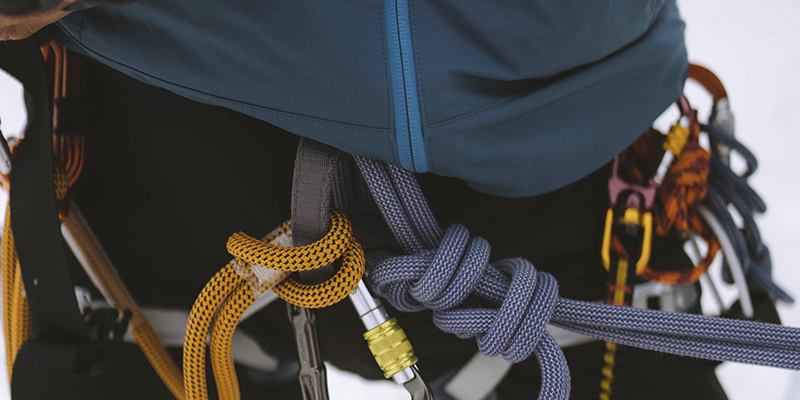
Understanding the Strength and Breaking Load of Static Climbing Rope
The relationship between climbing equipment and its users is one of interdependence, rooted in mutual understanding. Both parties must maintain a foundational rapport to ensure safety. Equipment, when used, has its limits in terms of bearing impact forces or weight, referred to as the "breaking load." On the other hand, users apply their weight to the equipment, which constitutes the "working load." The working load must remain significantly lower than the breaking load to guarantee the user's continuous safety. This ratio between the working load and the breaking load is known as the "safety factor." The Industrial Rope Access Trade Association (IRATA) provides recommendations for safety factors as follows: 10:1 for textile equipment and 5:1 for metal equipment.
The "breaking load/strength" is typically labeled prominently on the equipment and must be thoroughly checked before use. Users must never subject the equipment to excessive loads. If overloaded, the impact forces generated during actions like side pulls or falls could exceed the lowest breaking load of the equipment. Moreover, with the wear and tear or abrasions that come with extended use, the actual breaking load might be considerably lower than the indicated value.
Understanding the strength and breaking load of static climbing rope is paramount. This knowledge forms the bedrock of safe climbing practices, ensuring climbers can confidently rely on their equipment in various scenarios. As climbing enthusiasts, it's crucial to grasp the significance of these values to make informed decisions during climbs, safeguarding not only personal well-being but also the integrity of the equipment itself.

In essence, every climbing venture begins with assessing the working load and safety factor in relation to the breaking load of the static climbing rope. This simple yet vital practice can prevent critical accidents and equipment failures. By respecting the limits of both equipment and personal capacity, climbers can immerse themselves in the thrill of the ascent, knowing they are well-prepared and supported by the robust strength of their static climbing rope.
As climbers, let's remember that the strength and breaking load of the static climbing rope reflect more than just technical specifications—they epitomize the foundation of our safety and adventures on vertical terrain.

